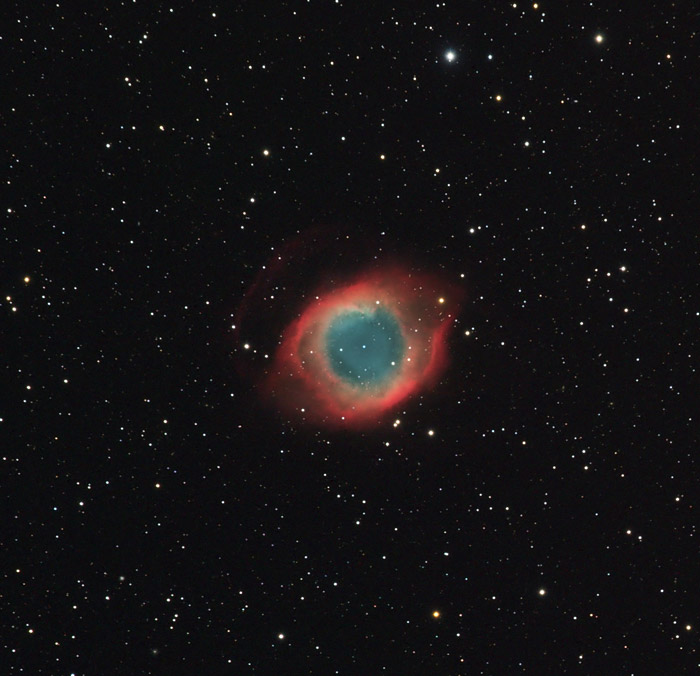
About this Image |
|
|
The Helix Nebula is one of the apparently largest planetaries known: Its apparent size covers an area of 16 arc minutes diameter, more than half of that of the full moon;
its faint halo extends even further to 28 arc minutes.
|
|
|
| Optics |
105mm TMB refractor with flattener at f/6.5 |
| Mount | AP-400 GEM |
| Camera | SBIG STL-11000M at -20C, internal filter wheel |
| Filters | Astronomik H-alpha (15 nm) + LRGB |
| Date | Aug 13, 2004. |
| Location | Hakos/Namibia |
| Sky Conditions | mag 6.5, high transparency, good seeing, temperature 10-15 C, |
| Exposure |
Ha = 120 minutes, LRGB= 20:20:20:20 min (all 10-minute sub-exposures) all 1x1. |
| Processing |
Image aquisition in Maxim DL 4.0; Image calibration, aligning, mean stacking, DDP and color synthesis in ImagesPlus; Photoshop: H-alpha blended to red and L channel; cropped; size 50/100 %; |